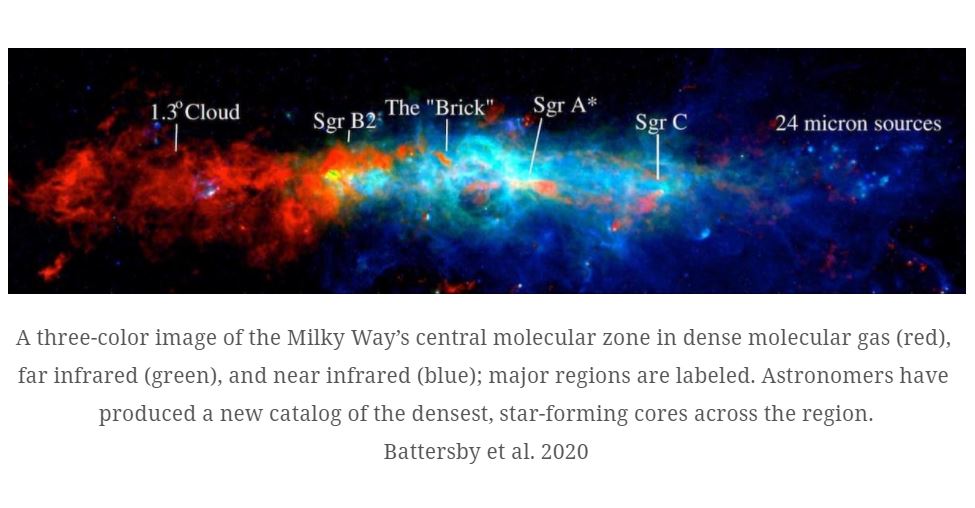
The Milky Way’s central molecular zone (CMZ) spans the innermost 1600 light-years of the galaxy (for comparison, the Sun is 26,600 light-years away from the galactic center) and includes a vast complex of molecular clouds containing about sixty million solar-masses of molecular gas. The gas in these clouds exists under more extreme physical conditions than elsewhere in the galaxy on average, with higher densities and temperatures, more intense pressures, magnetic fields, and turbulence, and higher cosmic-ray abundances and ultraviolet and X-ray radiation. The CMZ is therefore a unique laboratory for studying star formation: not only are these conditions rarely observed in the rest of the Milky Way, they appear to be similar to the conditions in extremely luminous star forming galaxies in the early universe and offer an indirect glimpse into understanding the cosmic history of star formation not otherwise currently possible. However there is a puzzle: the star formation rate in the CMZ is much less than would be expected, barely one-tenth of a solar-mass per year.
The birthplaces of stars are understood to be the densest regions in giant molecular clouds (GMCs), called ‘clumps,’ whose characteristic sizes are one to 10 light-years. These clumps fragment further into gravitationally bound ‘cores’ whose characteristic sizes are about ten times smaller; individual stellar systems can then form from the cores. The nature of the transitions between these evolutionary stages requires large surveys of both star-forming and non-star-forming structures across the hierarchical continuum of relevant scales and physical conditions. CfA astronomers Cara Battersby, Eric Keto, Daniel Callanan, Nimesh Patel, Qizhou Zhang, and Volker Tolls and their colleagues have released the CMZoom survey, a complete and unbiased map of the high density gas in the region. High density regions are quantified by the amount of molecular hydrogen gas along their lines-of-sight and are characterized by having so much dust that the visible light is completely blocked.
The survey was the result of a large, 550-hour Submillimeter Array program and resulted in new catalogs of the compact cores in the region. There are 285 separate cores that were unambiguously discovered; another 531 have more tentative identifications. The cores in the CMZ, as elsewhere, are potential sites for future stars clusters, but bright foreground and background emission towards the galactic center makes it difficult to determine these cores’ masses precisely, leaving this critical predictor of star formation highly uncertain (the emission is also one of the reasons why this catalog was so challenging to prepare). The astronomers were nevertheless able to estimate the maximum star formation potential of the cores in their catalog by making general but realistic assumptions about the cores’ masses, temperatures, and other properties. They find a maximum potential star formation rate of between 0.08-2.2 solar-masses per year, perhaps even as much as the current average star formation rate in the entire galaxy. The result highlights the puzzling weakness of current star formation in the CMZ. The survey, by cataloging all the cores for study, is a further step towards understanding star formation in the extreme environments present in the CMZ and the early universe. https://www.cfa.harvard.edu/news/su202108







Recent Comments